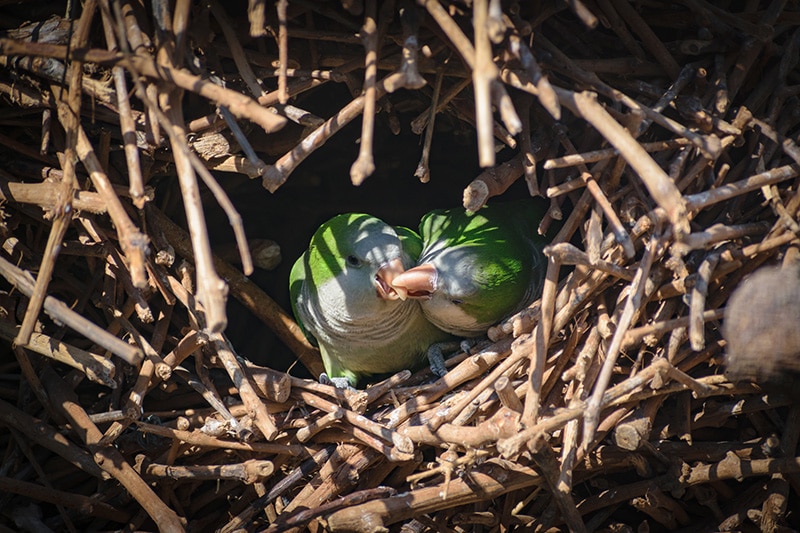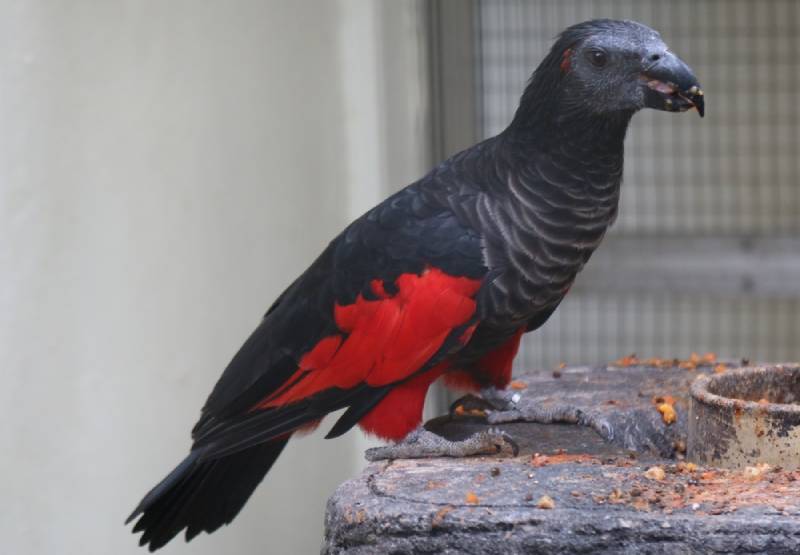How to Make a Parakeet Nesting Box: 3 Vet-Verified Methods You Can Make Today
Updated on

When your parakeets are in a loving mood or you’re specifically breeding parakeets, you’ll need the right setup so that they can mate in a healthy, safe way. Your birds will need a dedicated private space, but birdhouses can get expensive. How about making your own? It’s not that hard to make a serviceable and even beautiful nesting parakeet birdhouse yourself with some basic materials and tools. For a more specific idea on how to get started, check out some methods below that you can use to model your own.
The 3 Methods of How to Make a Parakeet Nesting Box
1. Budget Budgie Cardboard Nesting Box

| Tools: | Scissors, Sharpie, hot glue gun (optional) |
| Materials: | Reclaimed cardboard box, glue, double-sided tape |
| Difficulty: | Easy |
You can adapt nearly any old discarded but intact cardboard box into a usable parakeet nesting box, and it’s darn close to free to do if you have some very basic supplies. You can start with an old shoe box, delivery box, or whatever roughly looks like it could become a birdhouse.
Use your Sharpie to imagine and mark the entrances where your birds will enter their nesting box. They don’t have to be super large, and in fact, you want them to be a little smaller to provide privacy. Start with a smaller door and make it larger later if you need to, as you can’t make it smaller if you make an oversized door, so tread cautiously. Two 3-inch doors should suffice.
Pierce some smaller holes in the box’s sides to allow for plenty of air flow. Your next move is to reinforce all the box’s edges with several layers of tape, double-sided first and packing tape after, to seal everything. This step is key in helping the nesting box withstand the weight of the birds.
If your box has top flaps, tape one of them shut and use the other as a swinging top to allow your birds to get in and out. Add duct tape to the birdhouse at this stage if you want to add some weather resistance and help the box stay together longer. Over time, it will degrade and need to be replaced or upgraded, but it’s still a pretty good starter nesting box to get you started.
2. Classic Wooden Nesting Birdhouse

| Tools: | Rotary cutting tool, circular saw, drill, hammer, measuring tape/ruler |
| Materials: | Plywood, nails, wood glue |
| Difficulty: | Intermediate |
To make the most picturesque birdhouse you could ever imagine, you’ll just need some power tools, plywood, and some basic woodworking skills. To start, first cut two 14” x 12” panels to form one side of the birdhouse, cut holes of your desired size, and set them aside. Next, cut two square 12” x 12” panels for the other side. It helps to measure the dimensions of your plywood and mark it with a carpenter’s pencil, if possible.
You may only want two holes in the tops of the walls, but you could make four, as well. Cut these out with your rotary cutter and get your hammer and nails handy. Line up your panels perfectly straight—an assistant is invaluable here—and drive a first nail into one of the side joints of your birdhouse, then proceed to nail the other sides.
The bottom needs nails too, but again, we urge you to make sure that your nails are lined up perfectly straight. A bent or misplaced nail will just poke a hole into the birdhouse. One of the last steps is to cut a slim perch and nail it to the doorway of your birdhouse so your parakeets can easily fly to and from their home. If you wish, you can add some wood glue around the edges for extra sturdiness, but it’s not mandatory.
3. Top Nesting Box

| Tools: | Saw, rotary cutting tool, drill (optional), hammer, measuring tape/ruler, carpenter’s pencil |
| Materials: | Wood, nails, wire |
| Difficulty: | Intermediate |
For a more airy, open-access nesting birdhouse for your parakeets, you’ll need standard woodworking tools and supplies. The process is very similar to the wooden birdhouse above. You’ll start with two rectangular wood panels that are around 16” x 14”, or smaller for a cozier bird cabin. Square panels come next, proportionate to your rectangular panels’ short side—14” for the above figures. Lastly, cut a separate panel or two panels for your top, depending on whether you want a peaked roof or not.
Use your saw and rotary cutter to cut your desired windows in the walls, then cut two doors at least 3” x 3”, preferably a little bigger if possible. Take your hammer and nails and begin assembling the sides together, taking your time to make sure the nails drive straight. Screws work better if you own a drill, though.
Drill two tiny holes in the sides of your new wood nesting box and cut matching holes in your roof panel(s). Secure this top with wire, and voila, you have a nesting birdhouse with multiple doors and roof access.
Final Thoughts
Parakeet nesting boxes are cozy, intimate spaces where your parakeets can bond and mate at their leisure. You can start with a simple cardboard box and move on to a wood birdhouse later if you have the tools and skills. If not, you can always make another one. Adapt these plans to fit what you need in a parakeet nesting box!
Featured Image Credit: Waldemar Manfred Seehagen, Shutterstock












